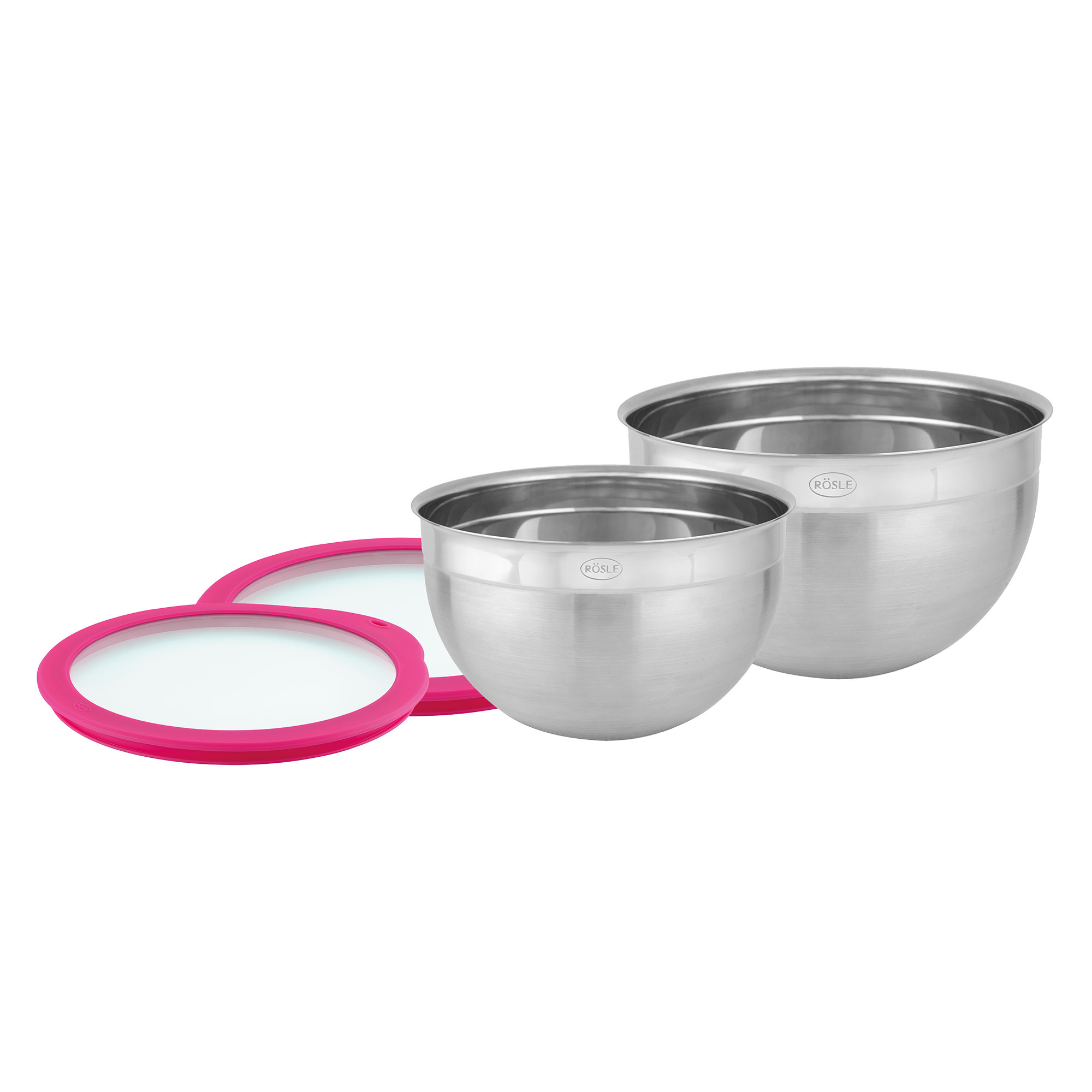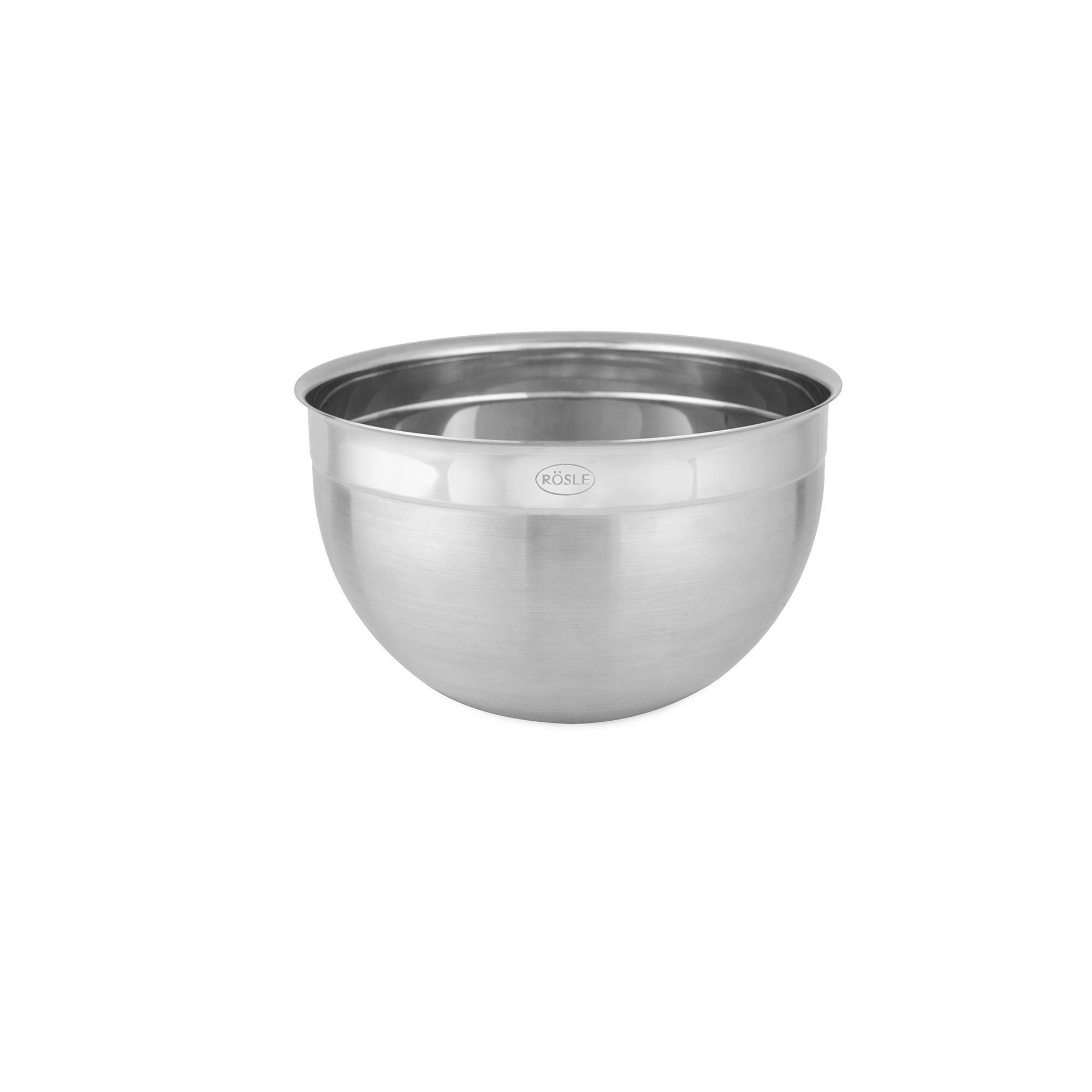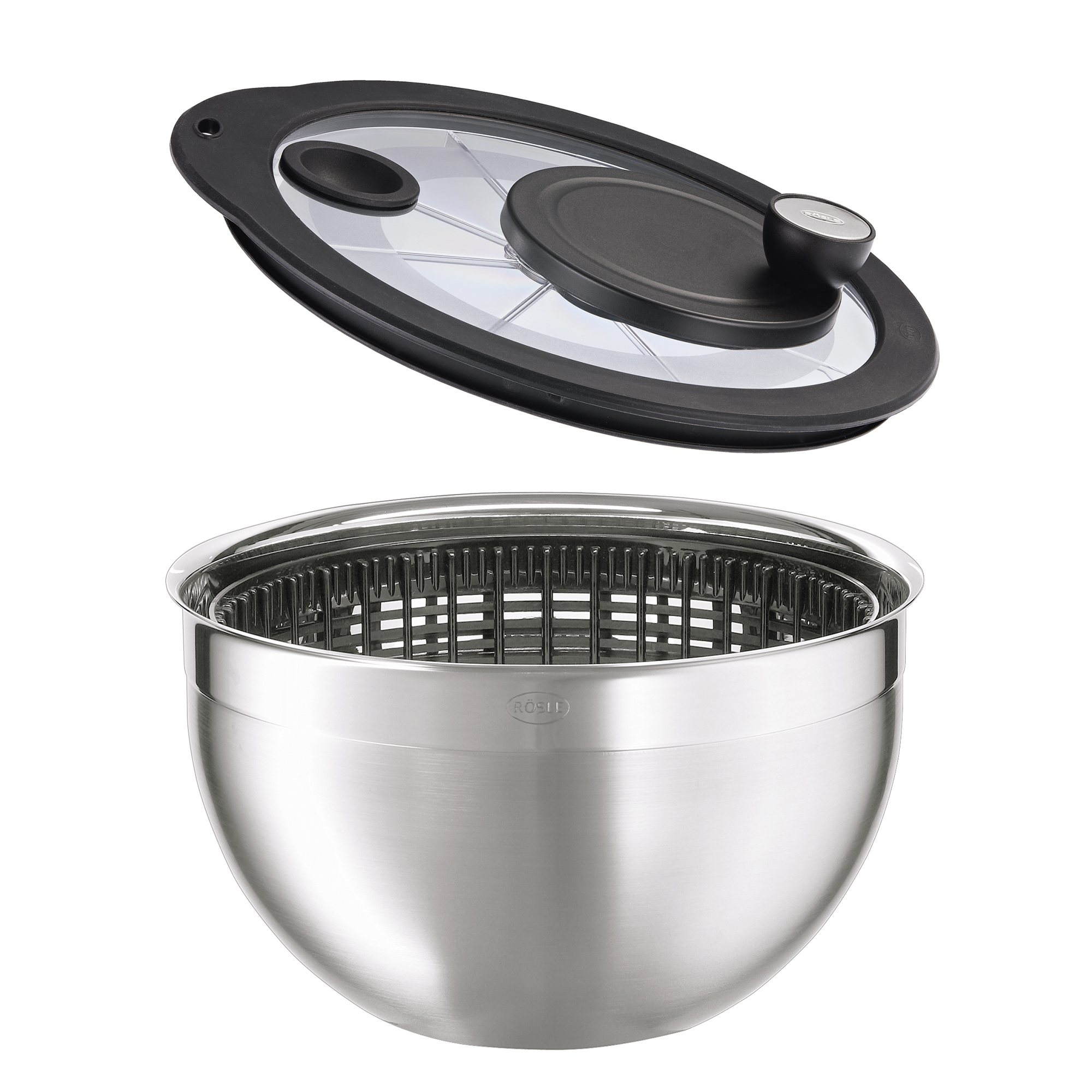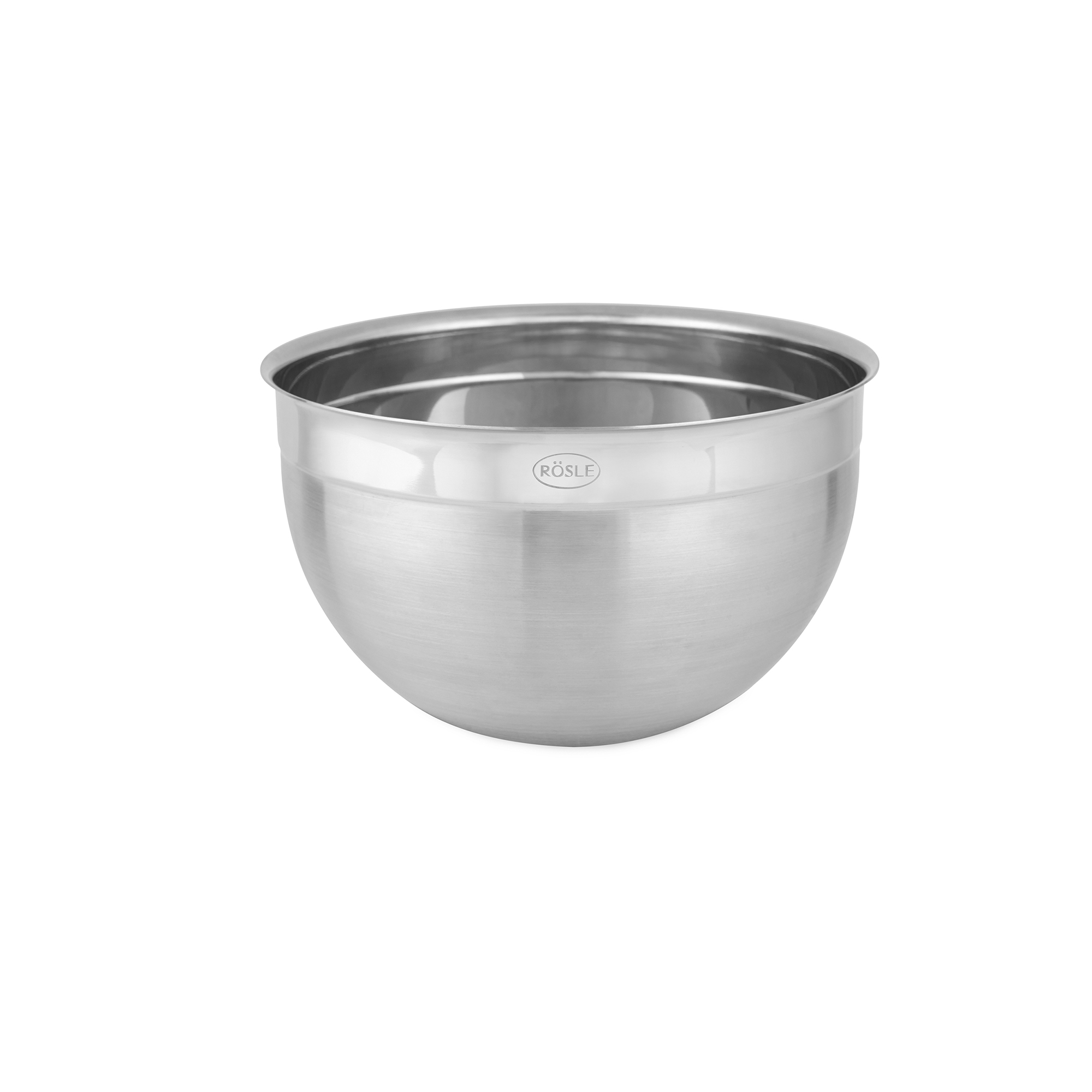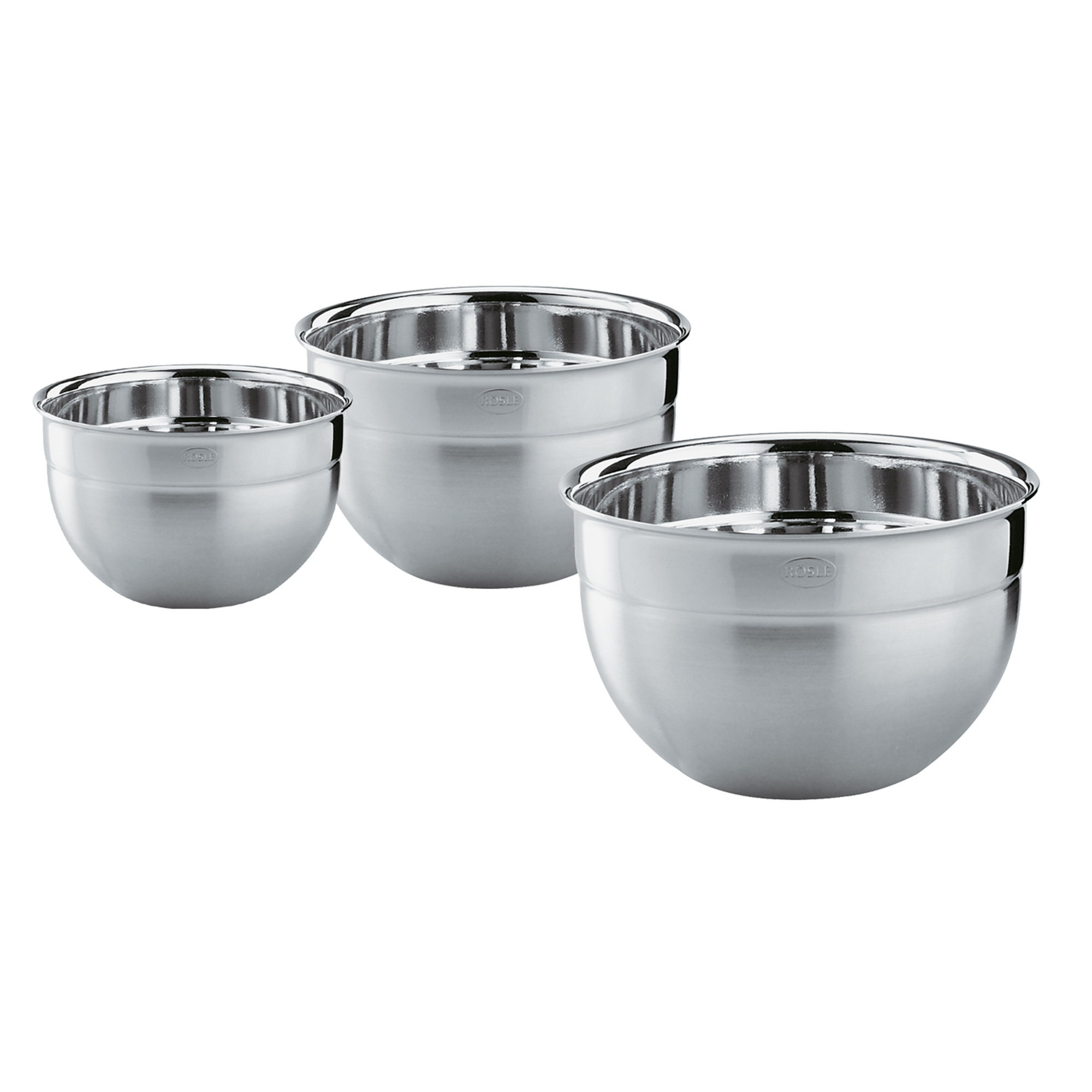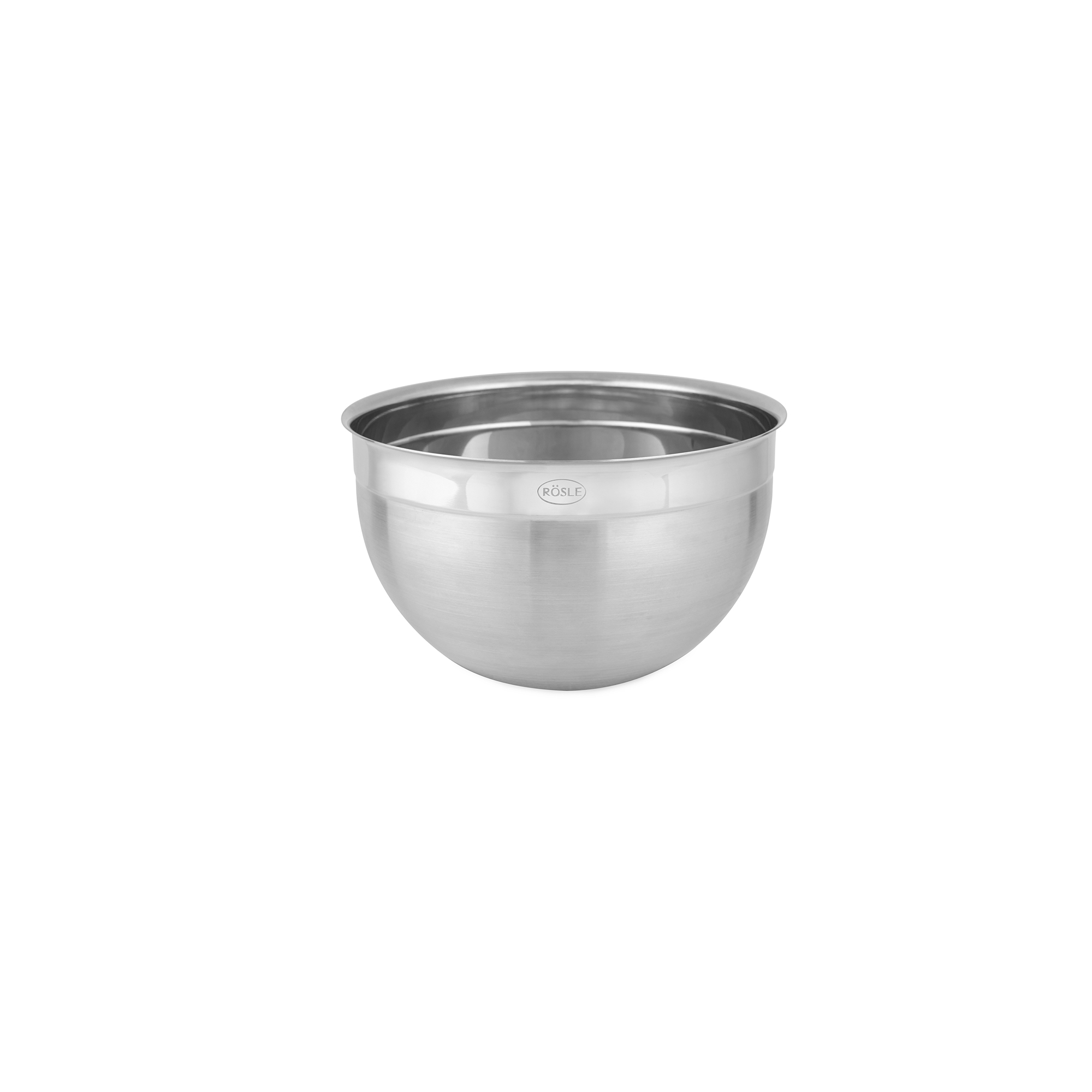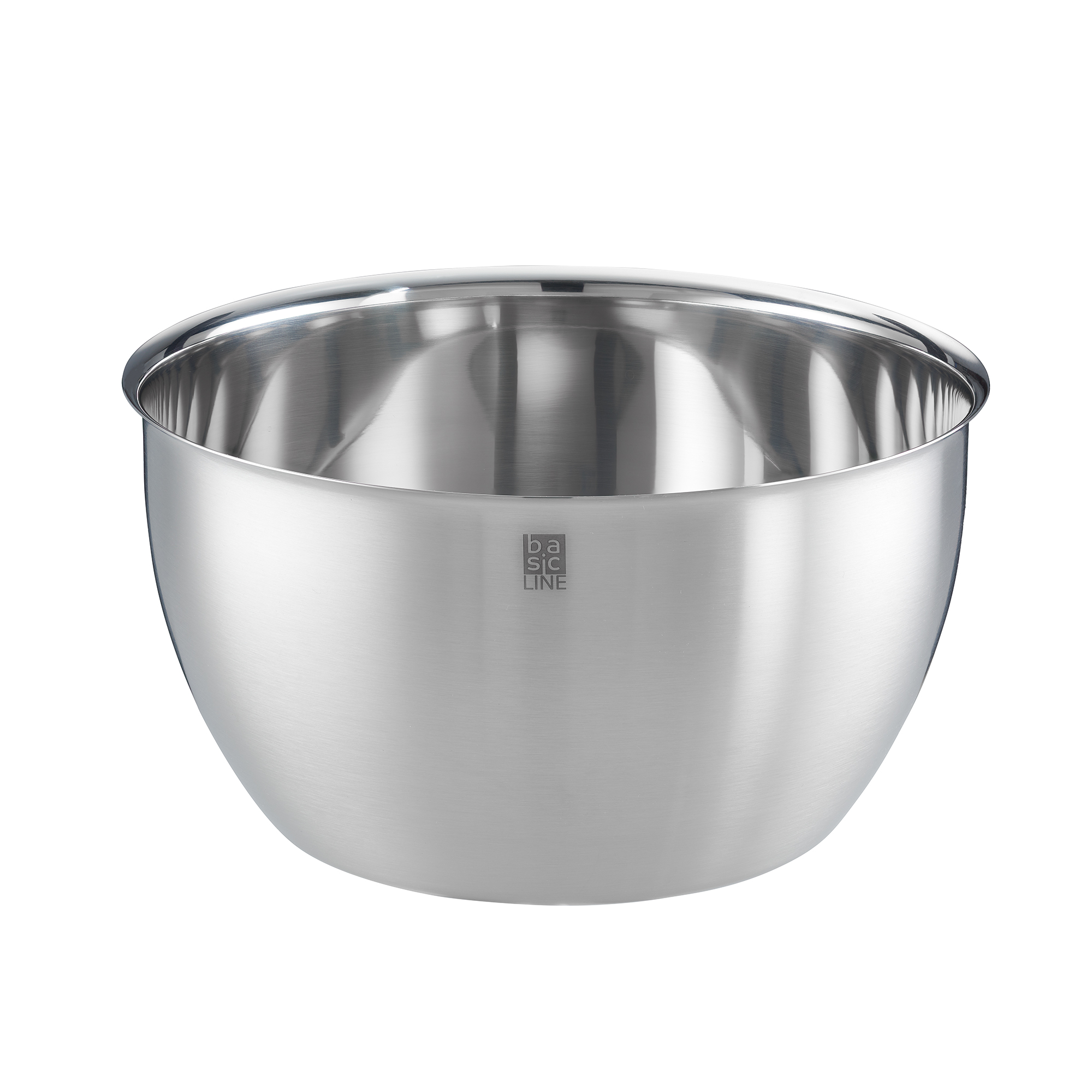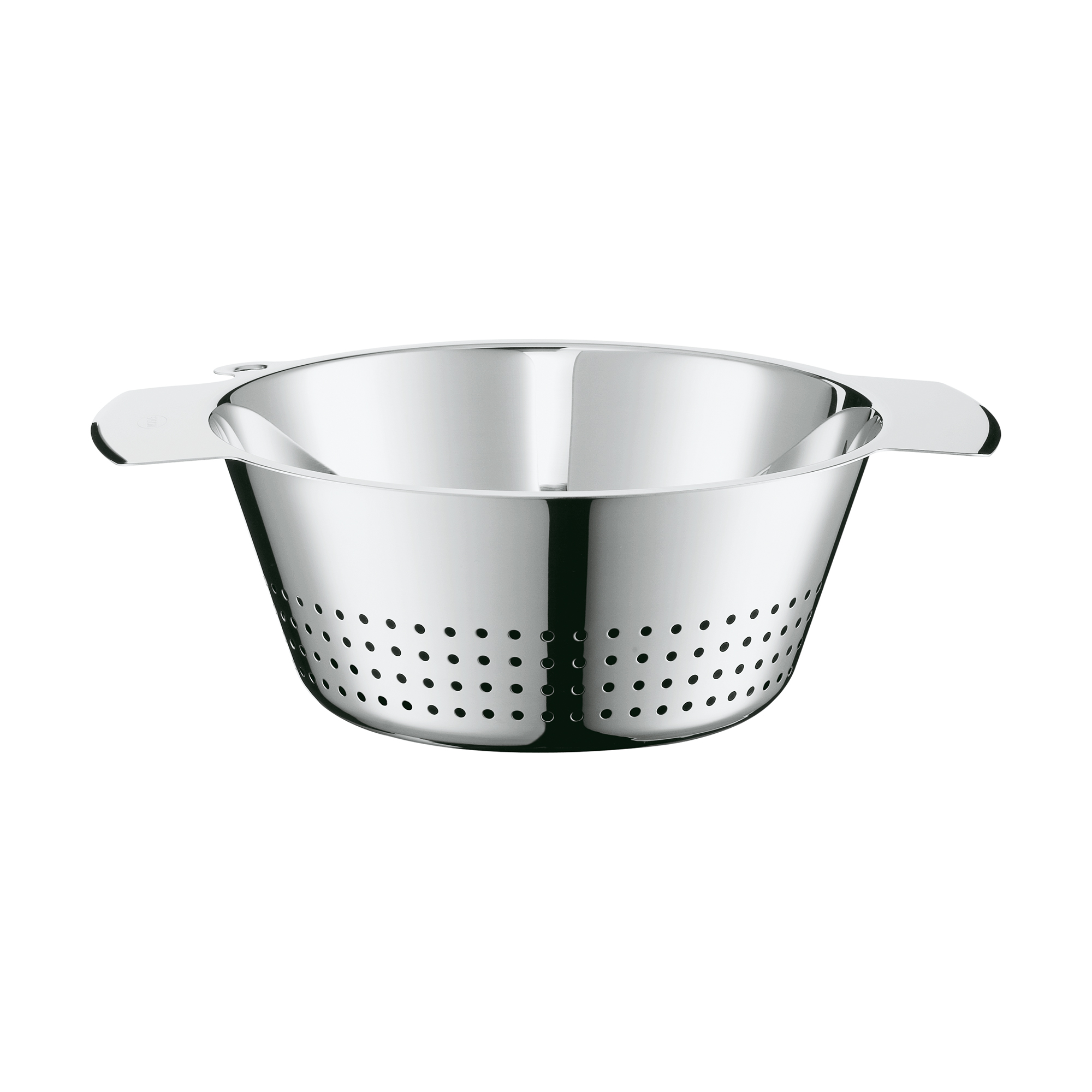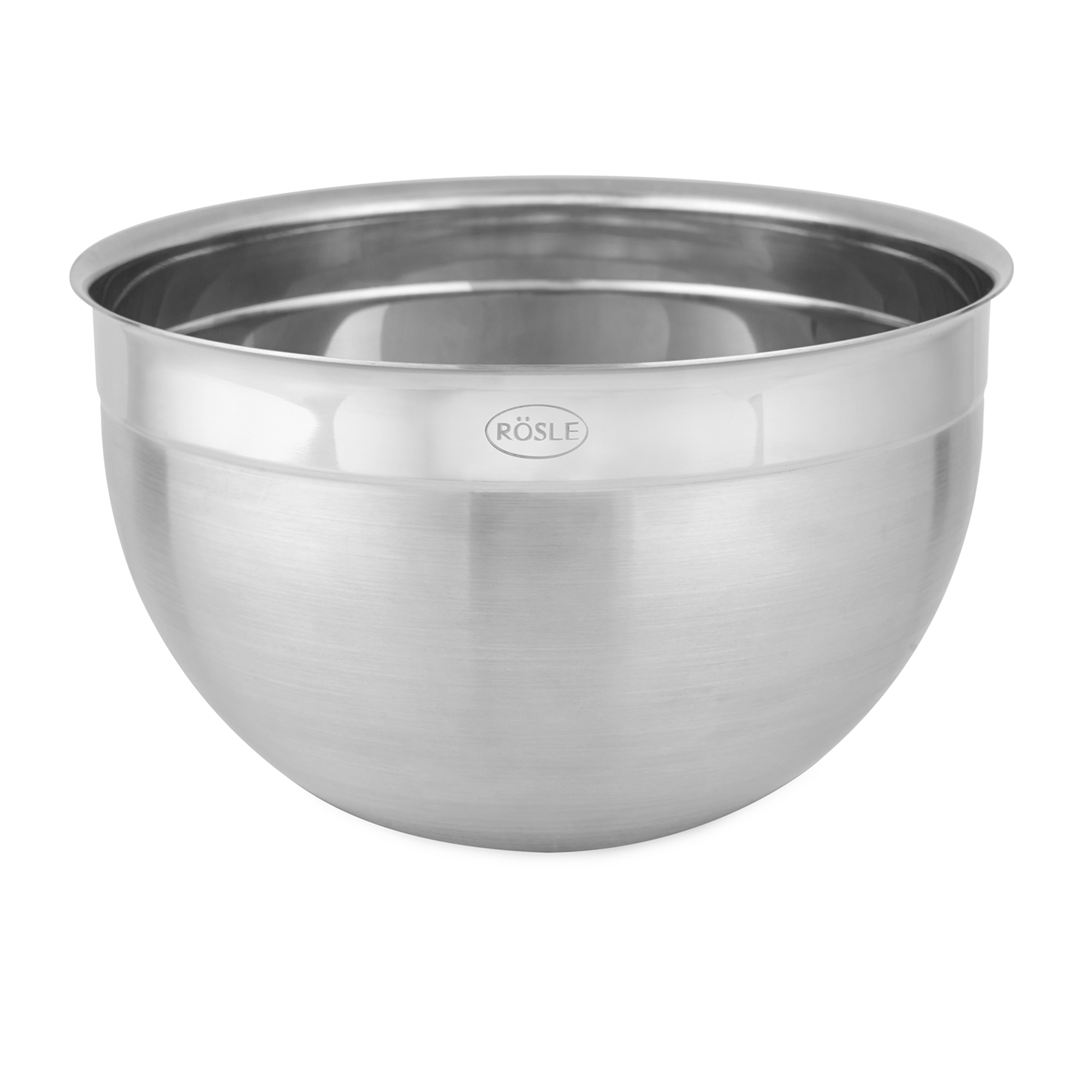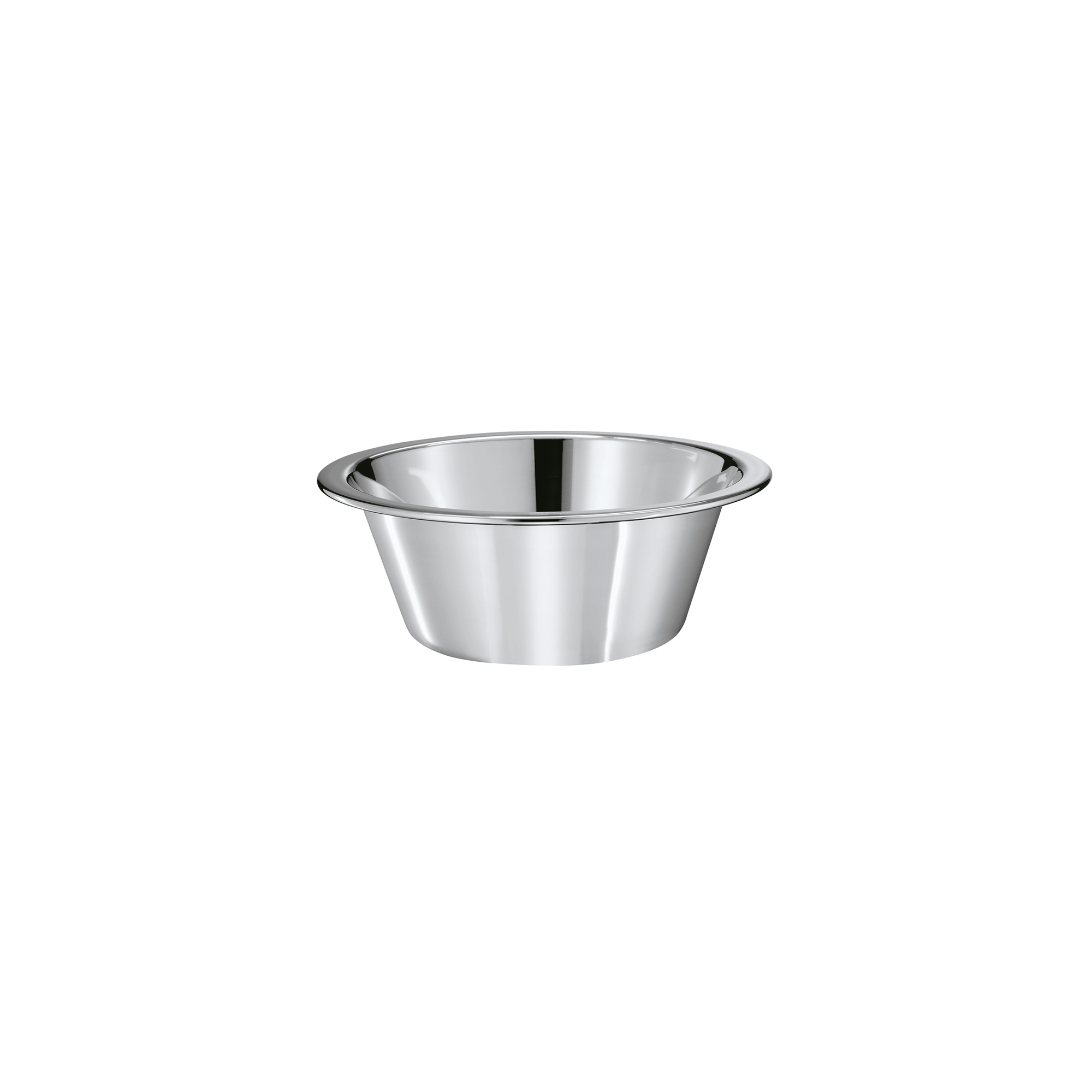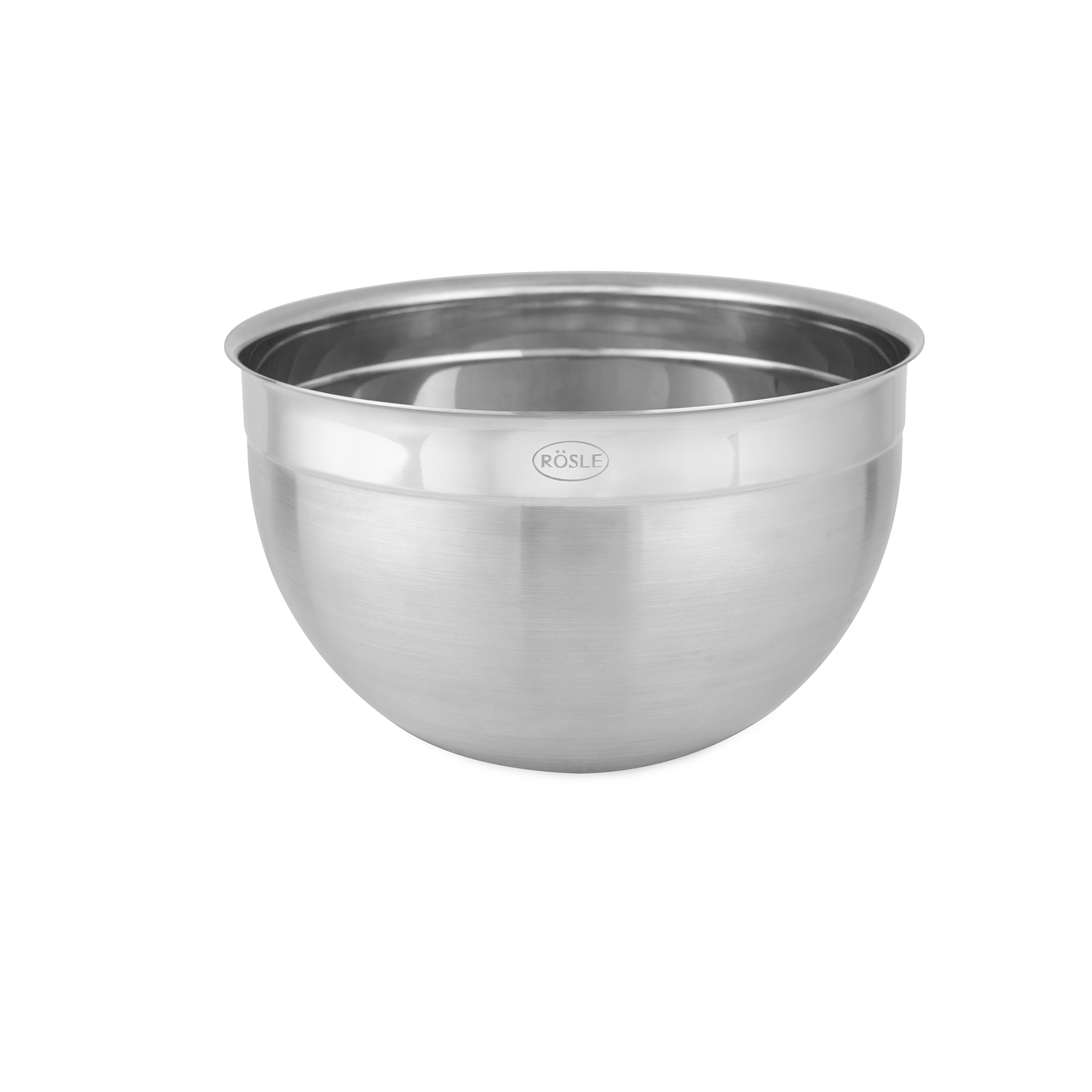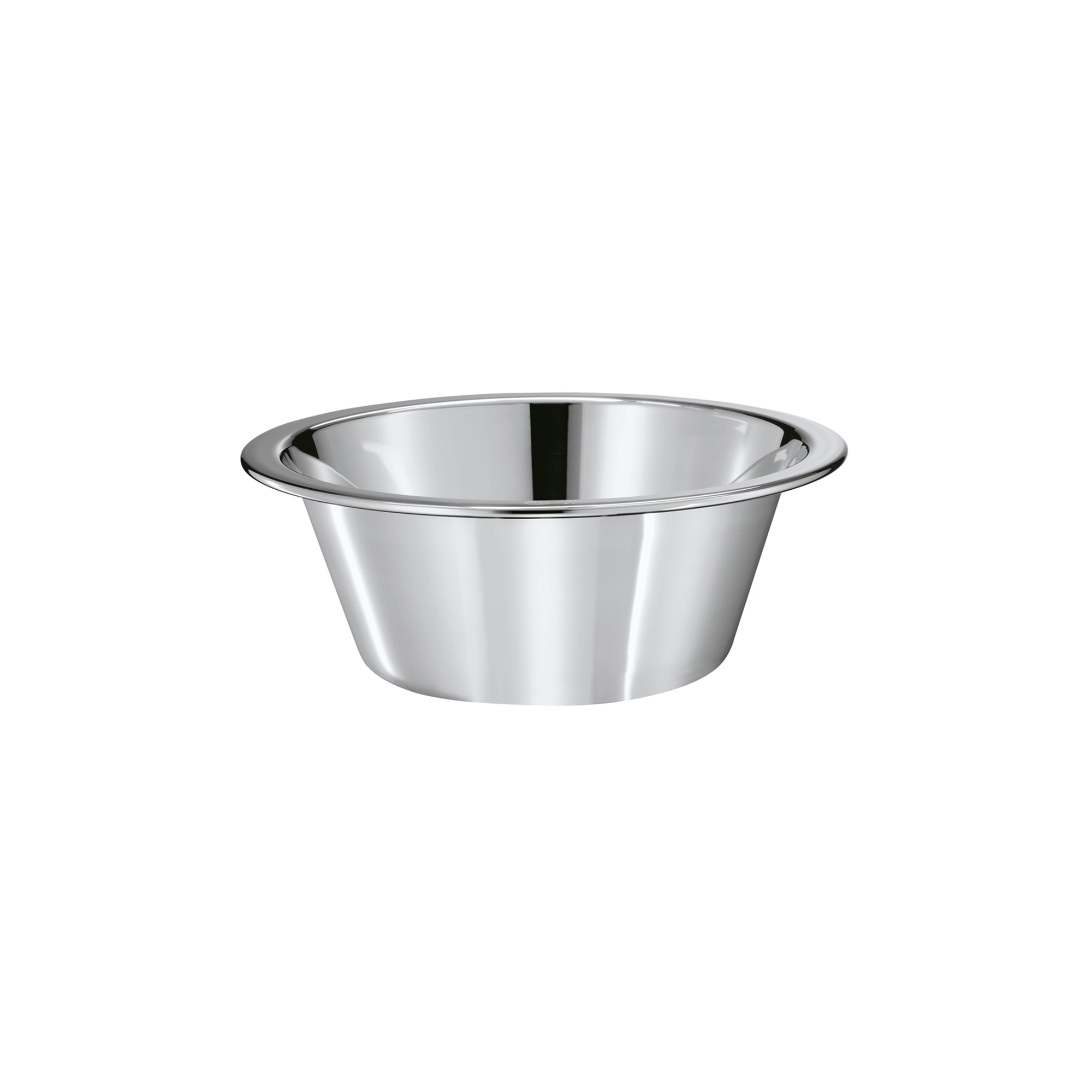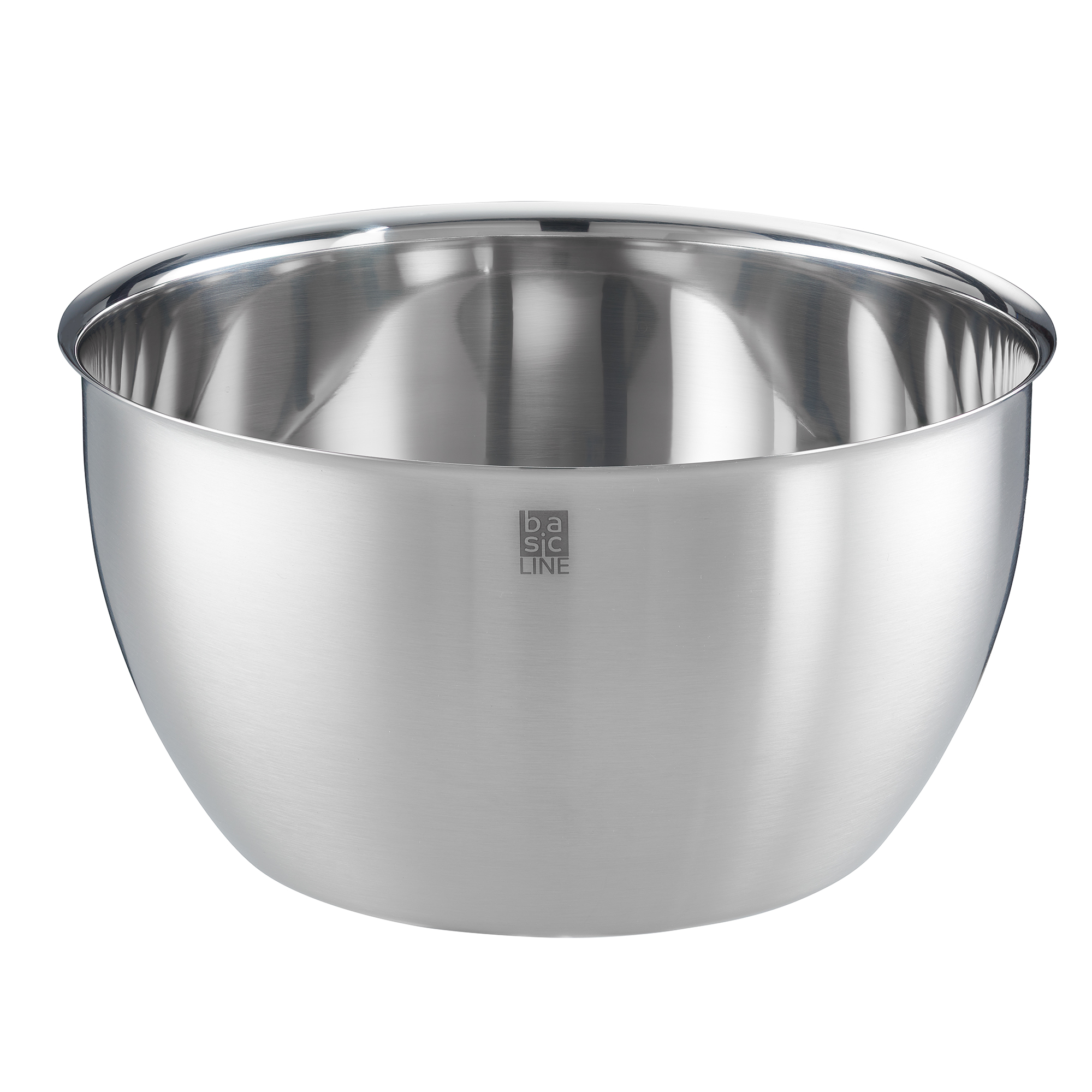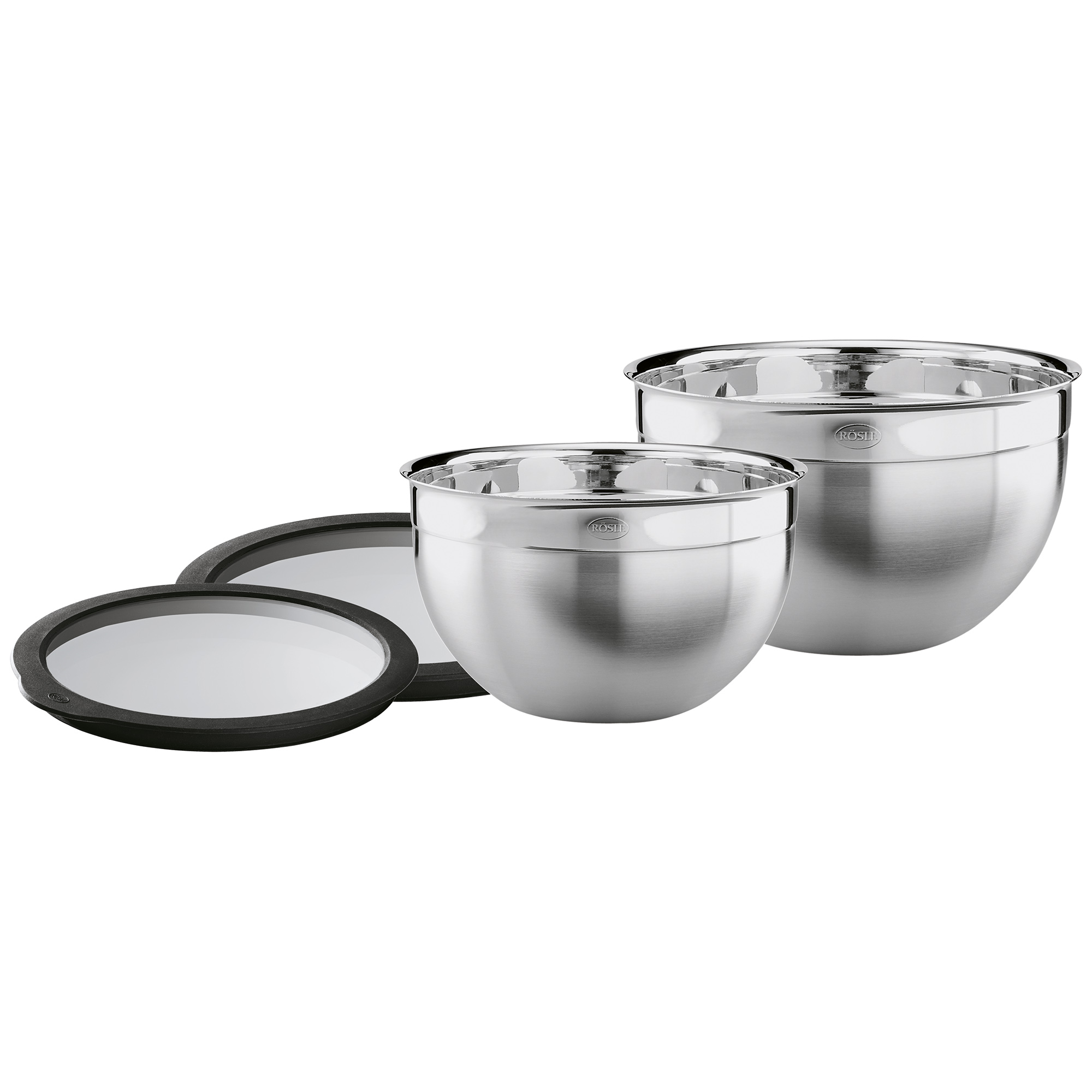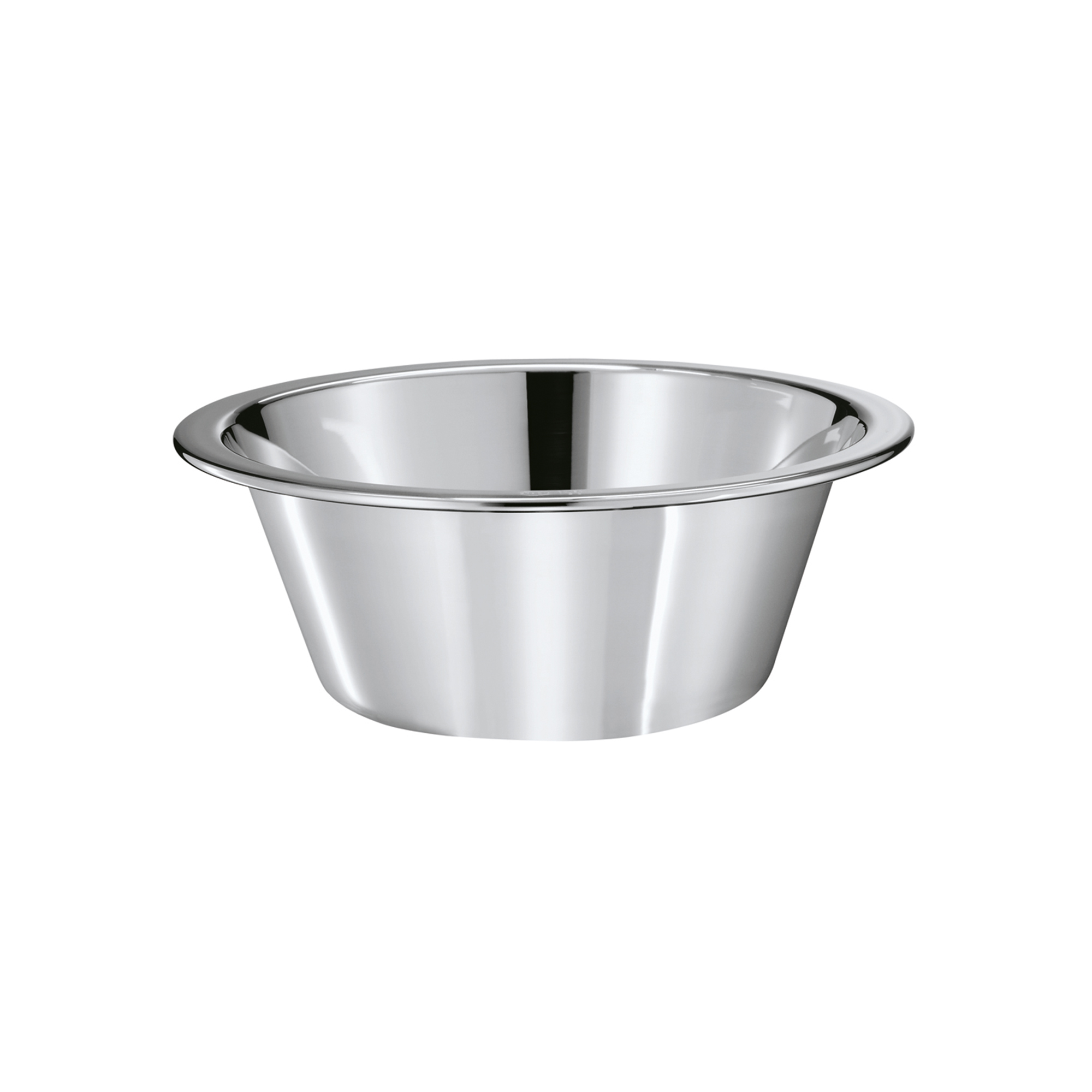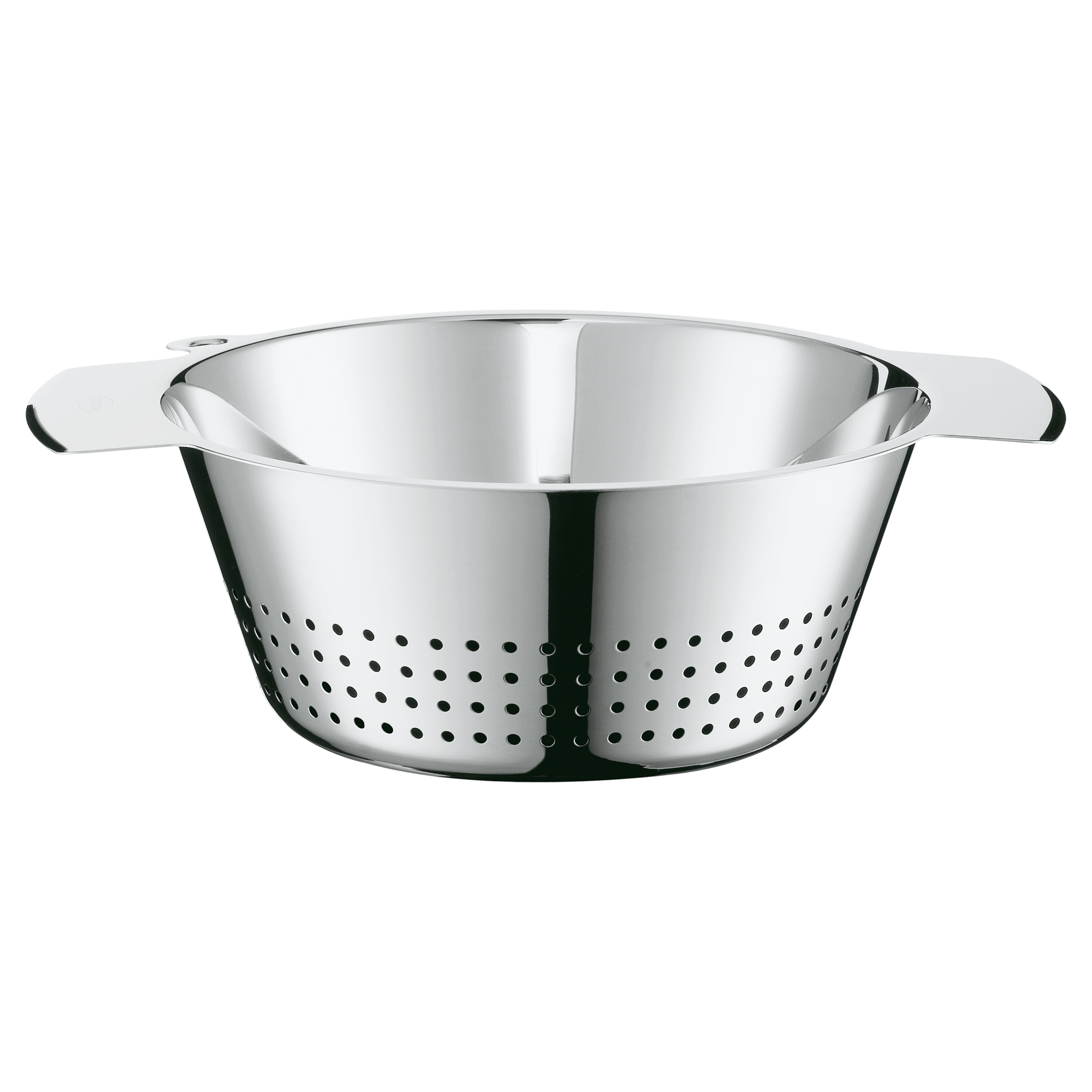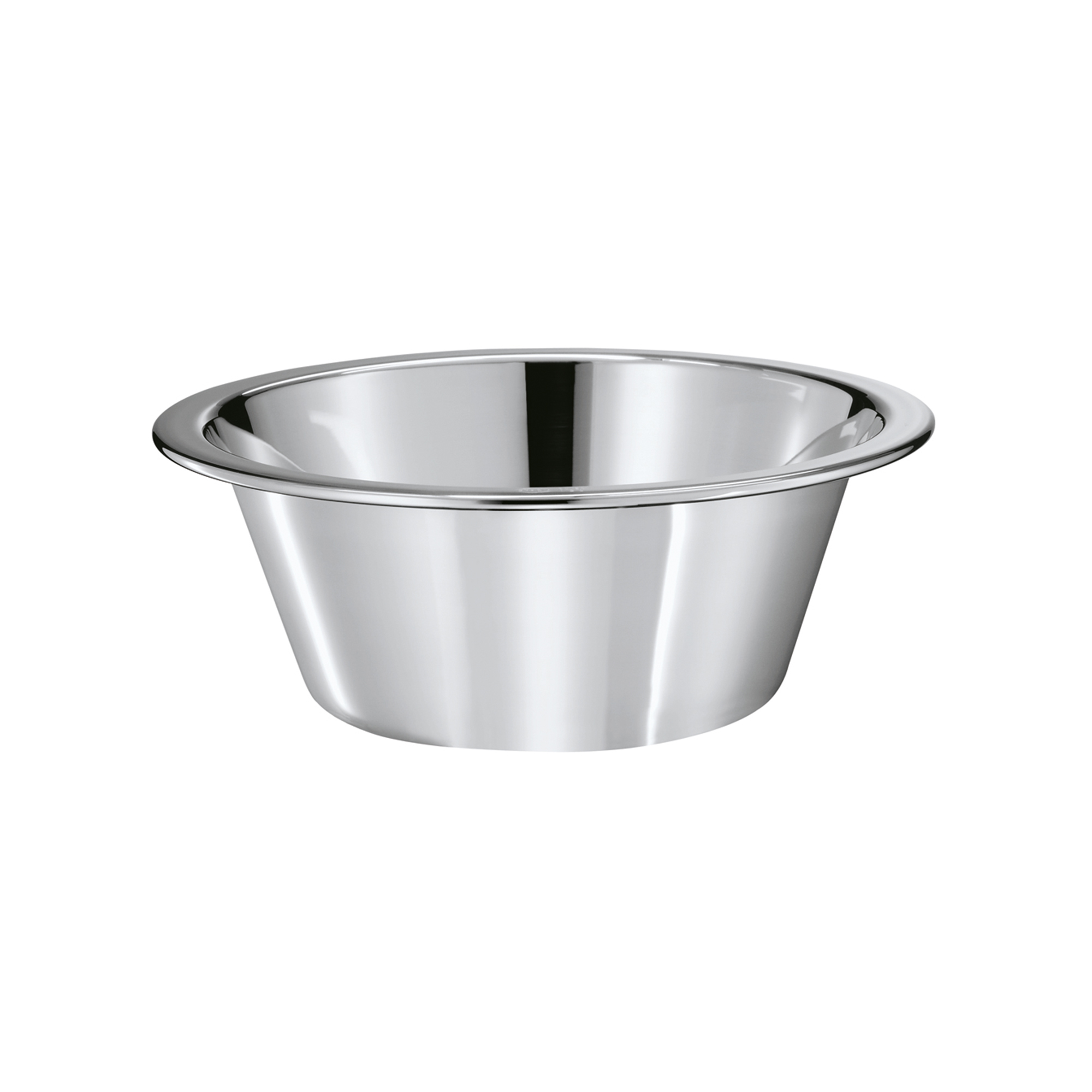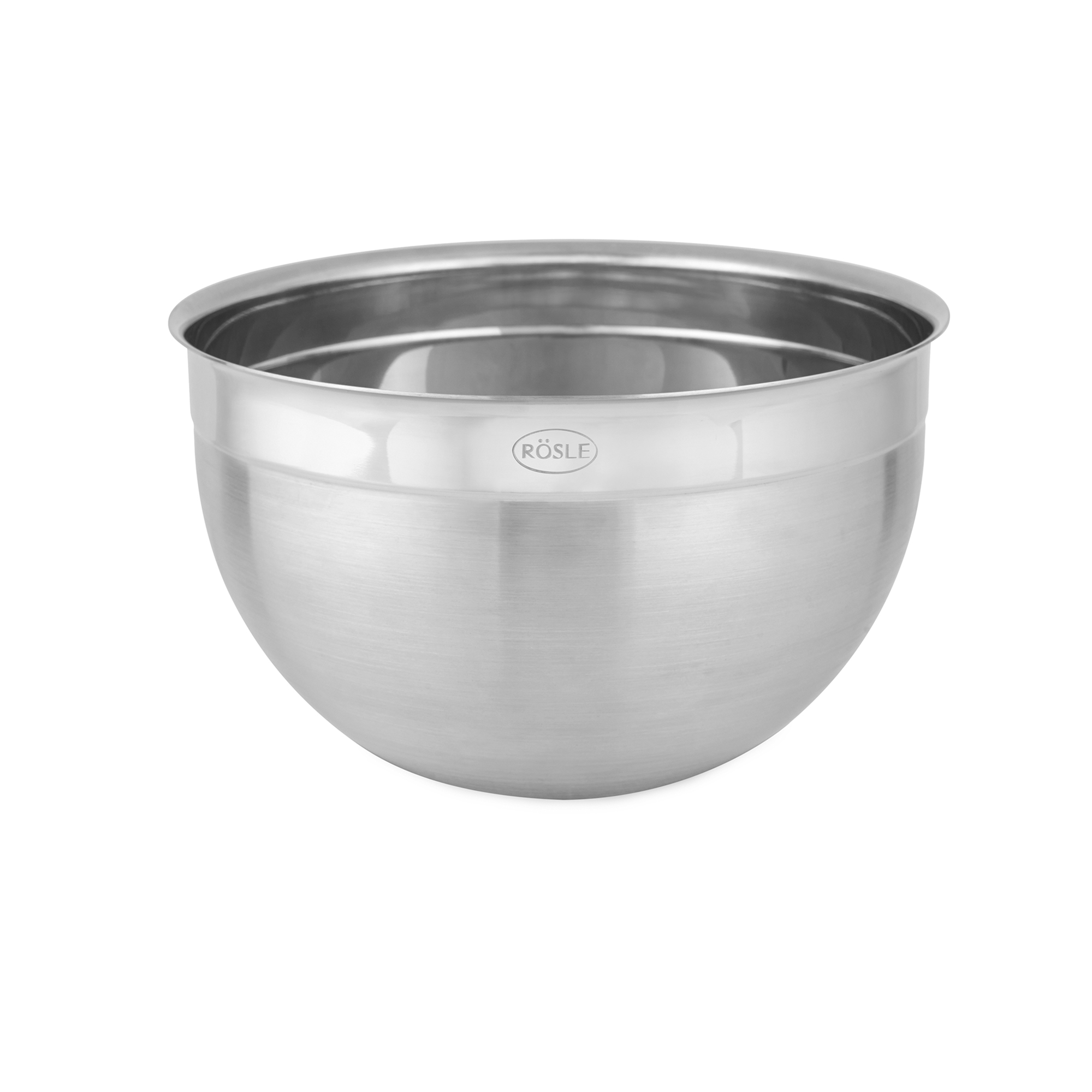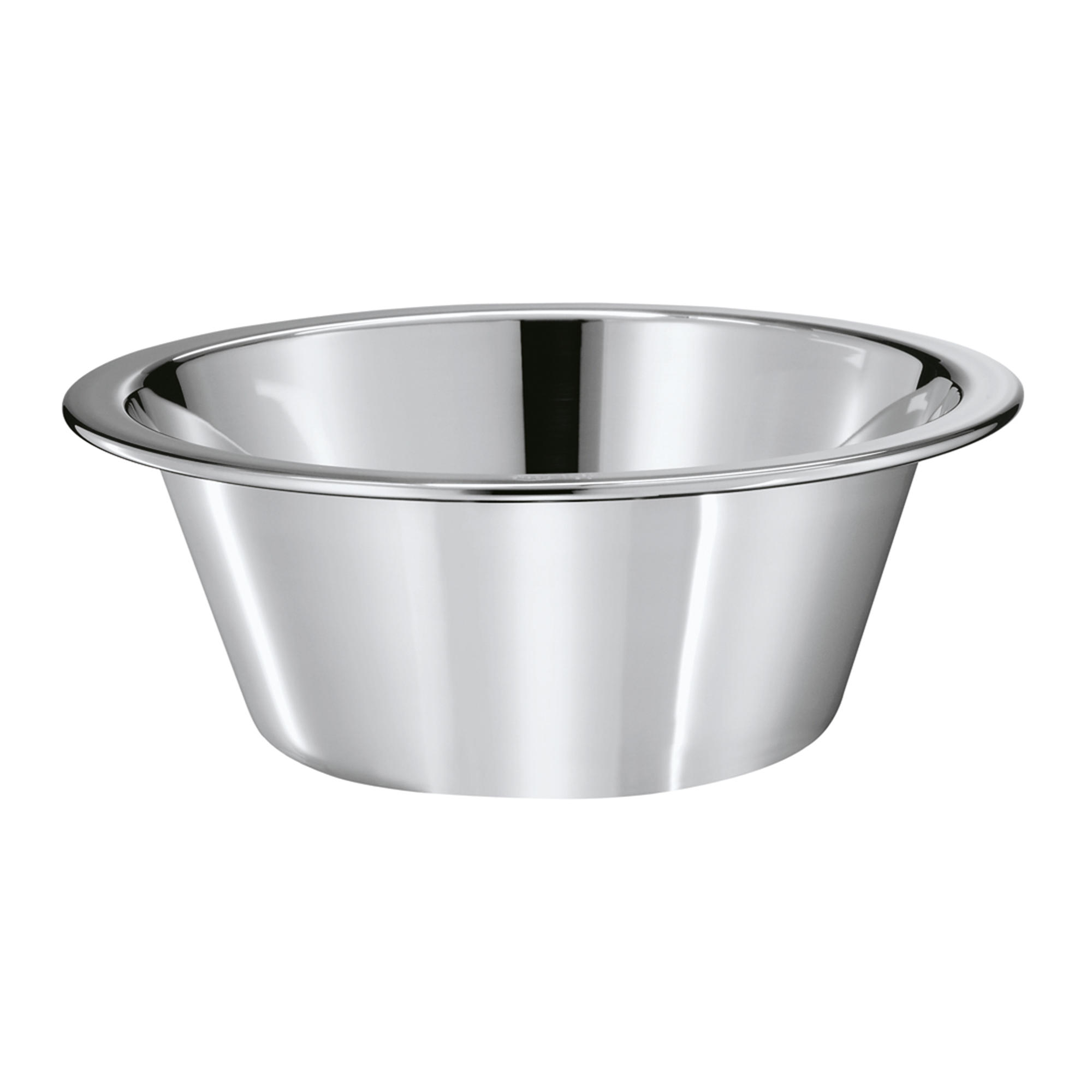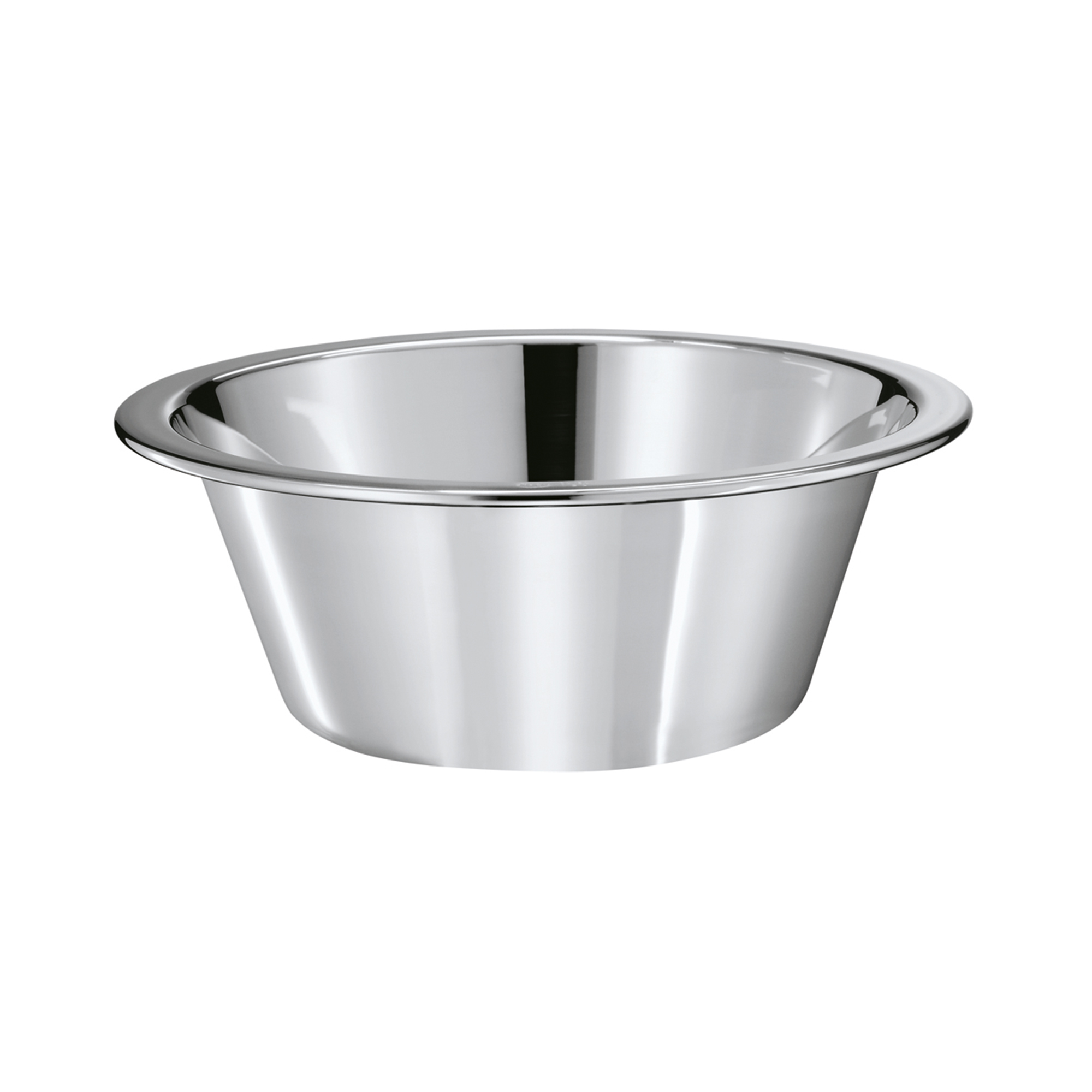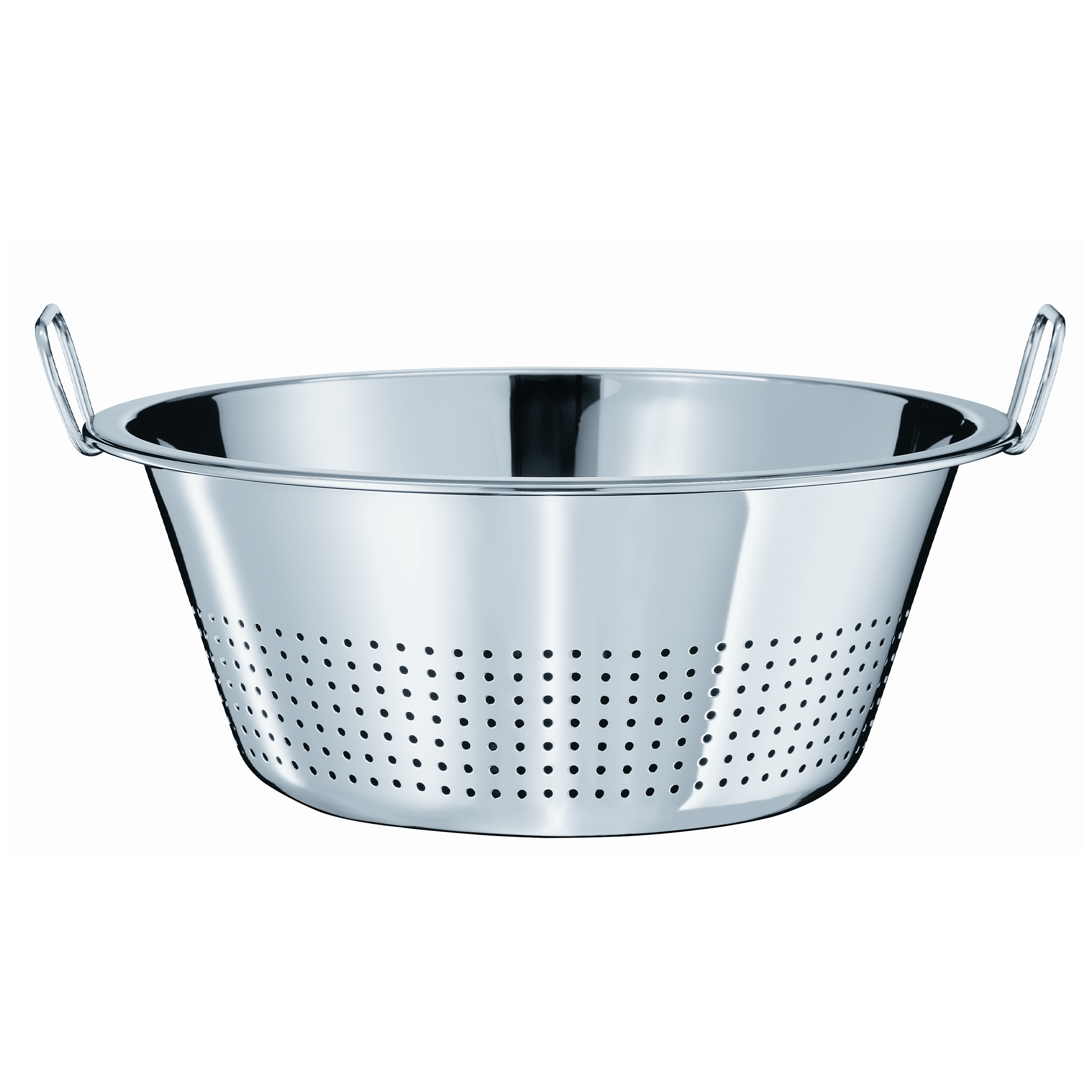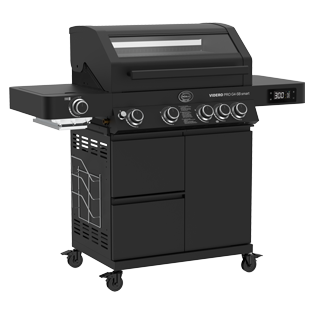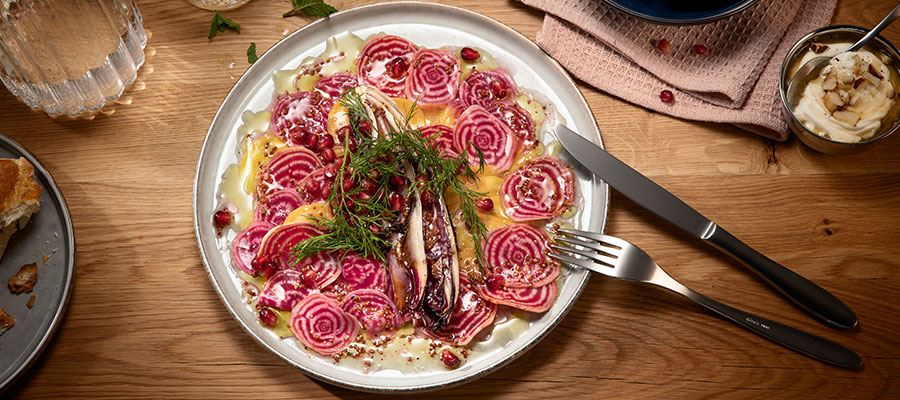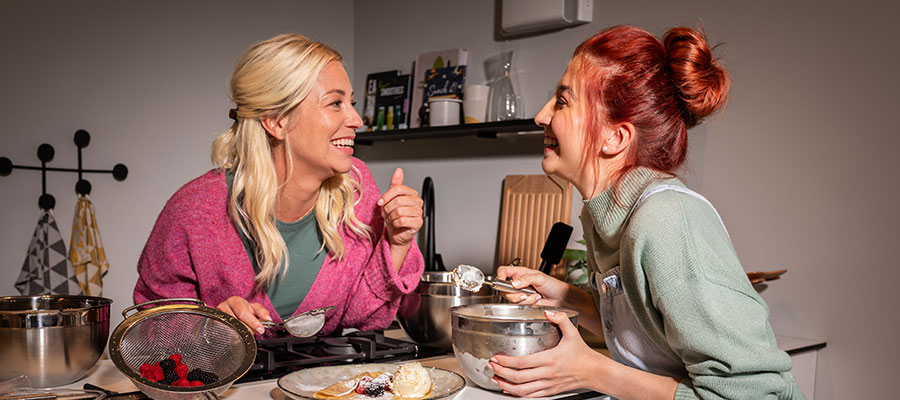Versatile kitchen helpers for the bakery: Mixing bowls from RÖSLE
Versatile kitchen helpers for the bakery:Mixing bowls from RÖSLE
Mixing bowls are practical all-rounders in the kitchen. As plastic bowls, they are usually only used for baking, to mix or blend the dough in. Stainless steel mixing bowls, on the other hand, are versatile - as baking bowls as well as serving bowls, salad bowls or storage and food preservation bowls.
A high-quality mixing bowl can therefore always also be a kitchen bowl, but not every kitchen bowl is suitable as a mixing bowl. We have summarized below what exactly the differences are, what features characterize a good mixing bowl and what you should therefore look out for when buying a mixing bowl for baking.
Mixing bowls - recognizing quality differences in material and shape
In theory, any bowl can be used as a mixing bowl, as long as it is high and stable enough to mix or whip a batter and cream in. In practice, however, certain materials and shapes have proven to be particularly suitable. The material from which the mixing bowl is made must be food-safe, tasteless, robust, easy to clean and not susceptible to wear and tear.
Plastics and stainless steel are therefore mainly used in the manufacture of mixing bowls. Plastic mixing bowls are usually cheaper than stainless steel bowls. However, there is an important difference when cleaning them in the dishwasher: plastic and stainless steel do not dry completely in the dishwasher and the usually wide rims of the plastic containers often fill up with rinsing water, meaning that the bowls have to be dried with a towel anyway.
Plastic bowls also have a tendency to discolor and wear out more quickly with frequent, intensive use than stainless steel bowls, which puts the sometimes lower purchase price into perspective and proves to be less sustainable. Stainless steel is therefore a preferred material for mixing bowls that need to meet the above-mentioned requirements for hygiene, durability, ease of care and practical handling.
In addition to the material, the shape plays an important role in the suitability of a bowl as a kitchen aid for baking. A mixing bowl in which you work with liquid foods or semi-liquid doughs using a whisk should have a correspondingly high rim. Bowls that taper towards the bottom, i.e. with a base diameter that is smaller than the diameter of the top rim, are particularly suitable here, as less flour or other ingredients can then settle at the bottom.
Mixing bowls with a conical shape are best for kneading dough and anything that needs to be worked vigorously with your hands before being placed in the oven. Conical means “cone-shaped” and indicates that these bowls also have a smaller base diameter. In contrast to the high-walled mixing bowl, conical bowls are usually wider so that the dough can be worked well in them. The base of a conical bowl should be flat so that the bowl can be placed on a non-slip surface.
Features of mixing bowls that can be used in a variety of ways
The material and design therefore determine whether a kitchen bowl is suitable for use as a mixing bowl. If this is the case, the mixing bowl can be used for many other purposes, for example for preparing salads or quark dishes, for dips and sauces or for storing dishes and food, provided the mixing bowl can be sealed airtight with a lid.
If the mixing bowl has a pouring rim, liquid food can be poured and decanted more easily. A ribbed rim improves the grip of the mixing bowl. On a stainless steel bowl, which is highly polished on the inside and matt polished on the outside, a ribbed rim also creates an attractive visual transition.
Some mixing bowls are offered with a measuring scale, although this is only a helpful feature at first glance. After all, the mixing bowl is not used for measuring or weighing, but for mixing the ingredients that have already been weighed out. However, as each ingredient has its own density and weight, 500 grams of flour and 200 grams of butter, for example, cannot simply be added together in a mixing bowl. A measuring jug or digital kitchen scales are therefore much better for measuring baking ingredients.
The basic rule for all mixing bowls is that they are not suitable for heating food on the hob or in the oven. Stainless steel bowls are also not designed for this, as unlike saucepans they do not have a reinforced base. However, if you want to let the yeast dough rise at a moderate temperature of 30 °C in an open oven, this is no problem with a stainless steel mixing bowl. Sourdough can also be fed and managed well in a stainless steel mixing bowl; a lid to keep it fresh helps to prevent it from drying out.
A variety of shapes and sizes, versatile in use:Mixing bowls from RÖSLE
In addition to the general features that characterize a good mixing bowl, it is the individual requirements that determine the choice. Should the bowls be stackable to save space or have a lid to keep them fresh? Do you need mixing bowls for a shared flat or a large family, or do you prefer to mix small portions of batter in them and occasionally stir a pancake or crêpe in them?
In the RÖSLE online store you will find mixing bowls in many different sizes and shapes. With the BASIC LINE mixing bowl set, which consists of two high-quality mixing bowls (Ø 16 and 20 cm), you can get started in the fine art of baking even on a small budget. And because the mixing bowls are not only practically stackable, but also have a trendy look, they can be used for mixing dough as well as for serving snacks during a streaming evening with friends.
Like the mixing bowls from the BASIC LINE range, our high-walled stainless steel bowls are also equipped with a continuous pouring rim so that liquids can be poured off easily. The mixing bowls are available individually in 5 different sizes with diameters from 8 to 28 cm and for capacities from 0.2 to 8.5 liters. Plenty of space to watch the beaten egg whites gain volume without worrying. The smaller bowls with high sides can be used for mixing individual ingredients, which can also be stored well in the fridge, or for small nut nibbles as an aperitif.
Instead of ordering the tall and attractively designed stainless steel mixing bowls individually, you can also order them as a set. For example, as a 2-piece mixing bowl set (Ø 20 and 24 cm), which comes with two glass cling lids. Or as a 3-piece bowl set (Ø 16, 20, 24 cm) without a lid, which is just as useful for baking as it is for serving.
Mixing bowls from RÖSLE are made of high-quality 18/10 stainless steel and are therefore corrosion and temperature resistant, tasteless and odorless, dishwasher-safe and suitable for all types of food. Thanks to the elegant 2-tone polish in matt and shiny, they also cut a fine figure on the table and leftovers can be stored aroma-proof using the matching food storage lids.
Of course, this also applies to our stylish eye-catcher, the conical mixing bowls, of which we have 6 different sizes in our range. Ingredients can be mixed, whisked or kneaded vigorously in these sturdy work bowls. The strikingly ribbed rim provides a strong visual accent and helps to ensure that even the larger conical mixing bowls are easy to grip. These bowls are often used for preparation and in professional kitchens.

